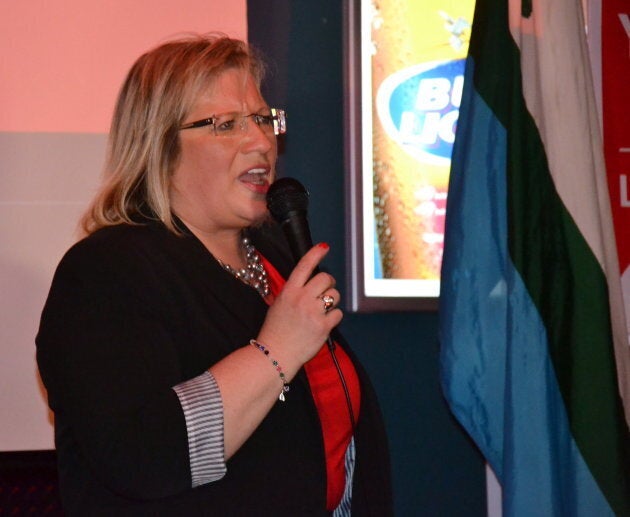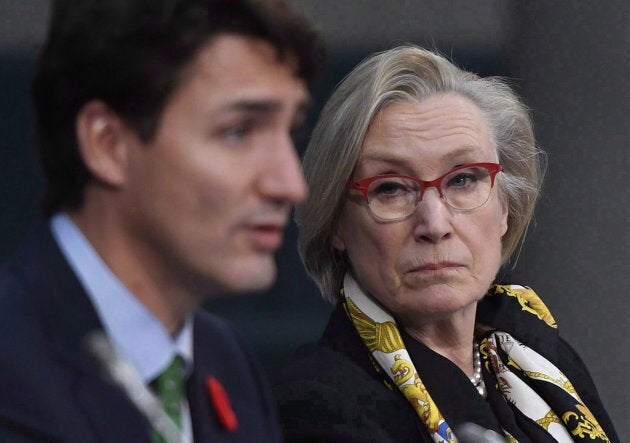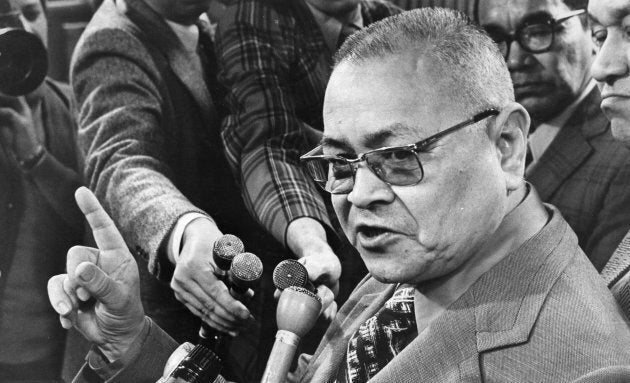Crown-Indigenous Relations Parliamentary Secretary Yvonne Jones has to stop blaming Indigenous people for having little to no desire to participate in the Liberal government's nation-to-nation land claims process, erroneously dubbed the "modern treaty process."

Jones argues the Liberal government cannot help it if Indigenous leaders are not willing to participate in Carolyn Bennett's engagement sessions where she is travelling the country, the goal being the development of a Recognition and Implementation of Rights Framework legislation for modern treaty making.
"If Indigenous people do not want to participate and engage in that process, we can't force them to the table. We're responding to what they have asked for," said Jones.
In arguing this, she makes it apparent to all who are in the know that she is either lacking in knowledge or willfully ignorant.
Leading Indigenous thinker Russell Diabo offers his critique of the nonsense, arguing this Liberal process remains rooted in racist and colonial principles, and is not at all about respecting a nation-to-nation relationship.
Understanding the nation-to-nation treaty relationship is really quite simple.
If there are 200 acres of land, the settler Canada Nation is entitled to 100 acres and Indigenous Nations are entitled to 100 acres. From these equal amounts of acreage the Nations are then entitled to the full and complete jurisdiction of the land and resources to then build institutions such as education, health care, laws, courts and child care programs that speaks to them and their ability to acquire a good life.

Ignorant no more: from treaties to land claims
An Indigenous understanding of Canada's constitutional beginnings is based on a federal treaty order in which Indigenous nations retained jurisdiction of their land and resources (as opposed to the latter-day provincial order). This Indigenous understanding of Canada's Constitution was recorded in the three wampum belts that were exchanged during the 1764 Treaty of Niagara. Many Canadians don't know that the foundations of Canada rest on a treaty process or that the treaty process was supposed to be about mutual benefit and the sharing of land and resources between Indigenous people and settlers.
Further, many Canadians have never had a chance to learn about how the treaty process has changed or — more accurately — slithered over time. Others, who know a little more, might wonder if the modern-day treaty process has actually improved. After all, Aboriginal rights are enshrined in Section 35 of the patriated Constitution.
At the time of the Peace and Friendship treaties, Indigenous people were more populous and healthier than the European settlers and, as such, treaty-making followed an Indigenous model. Treaties were about alliance: the goal was to share land and resources.
After the French ceded land they did not own to the British, and after the population ratio shifted due to disease and immigration, Europeans imposed a model of treaty-making that was first and foremost about land acquisition rather than sharing. Land purchases in Ontario accommodated British Loyalists and newcomers to the land. During this time, no provisions for reserves were established.
In return they received only mission settlement reserves and lost all of their hunting and fishing rights, while merely receiving a one-time payment.
According to colonial rule and the written text of the agreements — rather than what Indigenous people know through oral tradition — The Robinson Treaties of 1850that took place around the top of Lake Huron involved Indigenous nations ceding, or giving up, their land and land-related rights except for reserve land. These treaties also established provisions for annuities (rather than the one-time payouts common today), as well as hunting and fishing rights.
As Europeans spread westward, The Numbered Treaties, made from 1871 through 1921, required Indigenous nations to extinguish all of their land and land-related rights; later, a meagre amount of rights were granted back. These treaties also established provisions for reserves, annuities, and hunting and fishing rights.
With the The Williams Treaties of 1923, made in what is now southern Ontario, the European model of treaty-making continued to dispossess Indigenous nations. Here again, according to colonial law, Indigenous nations extinguished all of their land and land-related rights. Even worse, in return they received only mission settlement reserves and lost all of their hunting and fishing rights, while merely receiving a one-time payment (and thus no annuities).

Despite the longtime efforts of the Nisga'a Nation and Frank Calder, in what is now British Columbia, to have the treaty process respect Indigenous jurisdiction, after the 1973 Calder Casedecision the federal government still proceeded to unilaterally, rather than collaboratively, draft their Comprehensive Land Claims Policy. With this colonial policy firmly in place, Indigenous nations were once again required to extinguish all of their land and land-related rights. Many referred to this approach as the "blanket extinguishment" policy. It greatly outraged Indigenous people, and rightly so.
Due to Indigenous opposition to this new policy, in 1987 it was replaced with yet another unilaterally drafted Comprehensive Land Claims Policy. In this current policy, Indigenous nations are required to relinquish their land and land-related rights with a slight shift: it moves from the need for Indigenous nations to extinguish all of our land and land-related rights to the need to relinquish all of our land and land-related rights, in return for some other rights. Indigenous people are now expected to define our negotiated rights completely, and in very rigid and narrow terms.
We have not been silent about what we want: we want our Land back.
The shift in federal policy from calling for our rights to be extinguished to calling for our land rights to be relinquished is seen by many — myself included — as a pitiful reform. At the practical level, there is no difference between "extinguishing," "relinquishing" and "defining your rights completely."
What is more, with the current shift in rhetoric of the "rights and recognition model" nothing has changed. For example, the Algonquin land claims process in Ontario settlement offer has not changed: a $300-million, one-time buyout, and 1.3 per cent of our land. They all lead to the same outcome. As a result, many people liken the modern-day processes to those of private real estate transactions in line with the European model of treaty-making, where the only right Indigenous people have is the right to surrender land and resources.
Indigenous people have been telling Canada for decades, if not centuries, that they want their land and resource rights respected. Leading Indigenous thinkers and knowledge holders have travelled through Canada's court system and we have voiced our position.
More blogs from HuffPost Canada:
We have not been silent about what we want: we want our Land back, we want an equal share of the resources so we can build our own institutions, and we want to protect the natural world from a paradigm hellbent on plunder and the production of garbage and the pollution of the world's water.
We all need clean air, land and water. Yvonne Jones should shift into the Indigenous paradigm, and stop blaming Indigenous people when it is clear the Liberal government of Canada continues with its politics of lies.
Yvonne Jones, can you tell us, please: When will the Liberal government acknowledge what a genuine nation-to-nation treaty relationship is?
People interested in learning more about Canada's long-time and current denial of Indigenous rights should follow the work and learn from Russell Diabo.
Also on HuffPost: